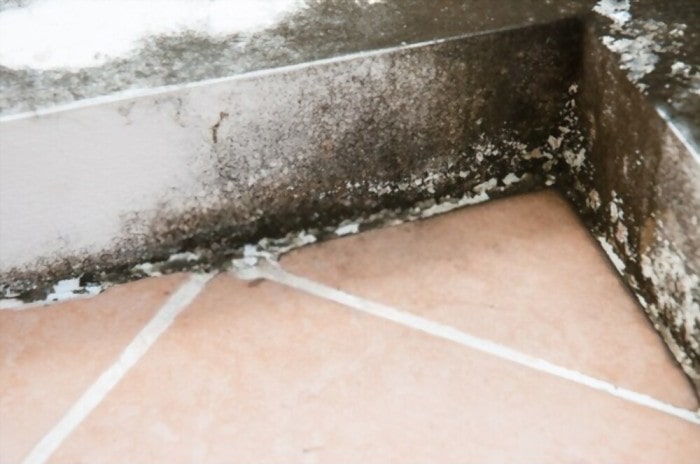
Imagine going down to your basement to get your laundry done to find black spots in the corner. If you’re lucky, it might just be a stain or your walls are simply aging. However, if it’s not a measly stain, you might have a big problem on your hands— mold.
What’s the big deal about mold? Isn’t it just something that grows on your bread after two weeks?
Mold may seem like something to laugh about but there’s nothing funny about the health hazards it leaves behind.
What is it?
Mold comes in different shapes, colors, and severity. There’s white, green, and the worst is black mold. For those of you who aren’t familiar with mold, here’s a short introduction to the kinds of mold.
White Mold:
This type of mold is most commonly found on foods that go bad. It can also be found on water laden things in your basement.
Green Mold:
Similarly to white mold, you might find green mold in your rotting food. However, if you find this type of mold in your basement, it’s most likely Cladosporium. Sometimes, mycotoxins come with Cladosporium growth but allergy symptoms always appear in anyone exposed to it.
Black Mold:
Black mold is the most common kind of mold you can find in a basement and has the worst effects. It releases mycotoxins as it grows and can cause a wide range of negative health effects.
Causes of Mold:
The two things mold need to grow is moisture and material to grow on. So, once materials are exposed to water and aren’t cleaned properly, you can definitely expect mold growth in less than two days.
Although basement mold can grow and thrive on any material, they have different ways of affecting various items and surfaces.
On walls, they can be a significant problem since you can’t find the exact source of the water. With wood, mold can grow on it easily and it can be tedious to clean due to its intricate pathways for mold to bore into. Wood might not survive mold growth and can be an expensive problem.
Fabrics on couches, chairs, towels, and clothing are porous and are extremely contagious to mold contamination. For those of you who use their basement as a place to hang out or sleep in, you might need to keep an eye on your furniture.
Other than the havoc they wreak on your furniture, walls, and clothes, they also cause a variety of health hazards such as eye irritation, blurred vision, coughing, wheezing, sore throat, respiratory issues, and nausea just to name a few.
Severe health hazards include neurological and heart issues which could eventually lead to death.
Preventing Mold
In a dark and poorly ventilated basement. Drying water-laden materials can be tedious. So, in some cases, it’s best to prevent mold from growing in the first place.
If you’re renting a space and living in an old home it can be an issue for you as a tenant. For landlords, it’s best to avoid issues in rental contracts with your tenants by making sure your home or space is safe to live in.
Here’s what you can do to prevent mold the best way you can.
1. Check the pipes for leaks
Leaky pipes can be a big source of mold, especially if you don’t know where the leak is. The best way to first start preventing mold is to keep an eye on your pipes. Since basements are where pipes, drains, and faucets can be found, it can be a source of flooding or water damage.
2. Bring in fans and dehumidifiers
Without proper ventilation, mold growth is highly likely to happen. If your basement has no ventilation and is poorly lit, it’s time to bring in some fans and dehumidifiers. Investing in these tools might seem expensive but it definitely beats having to deal with extensive mold growth later on.
3. Clean the HVAC
Oftentimes, basements have HVAC ducts running through them which are likely spots for mold to make an appearance. To prevent mold growth, you should regularly check the drip pan.
When left uncleaned for a long time, condensation can form and cause mold growth to its moisture levels.
Once mold has started growing in your HVAC system, it may already be too late since the mold-contaminated air will continue to grow inside your home.
4. Make sure drains are clean from debris
Cleaning your drains is one of the ways to prevent mold growth. Your drains constantly have things going through them and if debris gets stuck, it’s a moist place for mold to grow on.
So, keep in mind to check on your drains and see if the water flows properly.
5. Check for cracks
Cracks in your basement such as on your walls, floors, or even the ceiling should be a warning sign for mold. So if you find any suspicious cracks anywhere in your basement, it might be a good idea to see if it is moist as it can be a leak.
However, if it’s dry, it’s probably necessary to seal it as soon as you can to prevent any possible growth of mold.
Final Thoughts
Mold in basements can be extremely dangerous and troublesome when left alone. So, early intervention and prevention are definitely needed to help protect your belongings and family members.
If you are dealing with mold and aren’t sure what else to do, the best thing you can do is call a professional to give you a hand. You might be dealing with something bigger and professionals will certainly lighten the load. If cost is a problem, it’s best to check if your homeowner insurance covers mold removal.
In the future, you can keep mold growth at bay by preventing them. We hope these tips help you in your journey of improving your living space.
